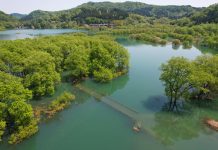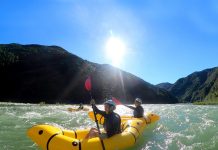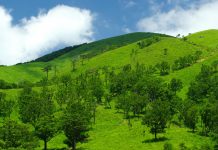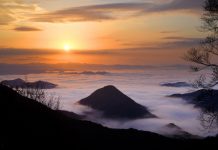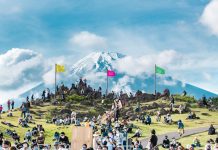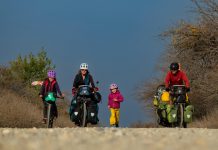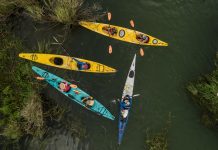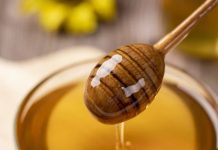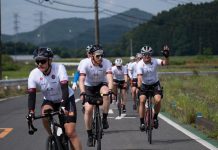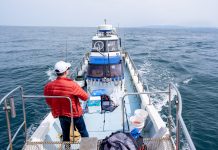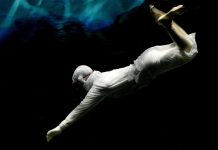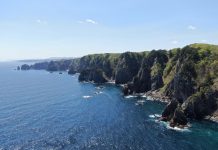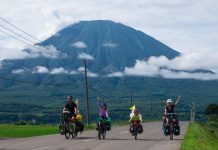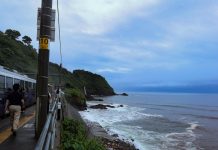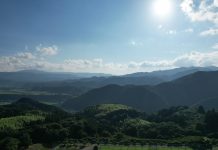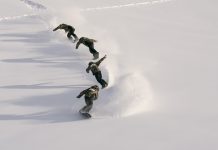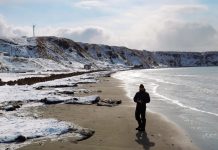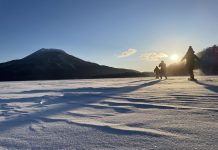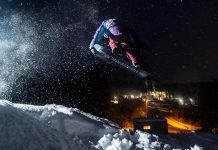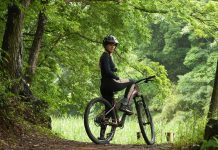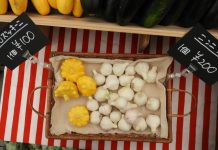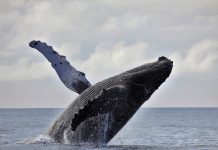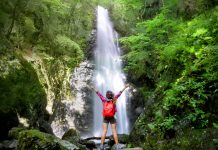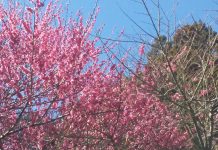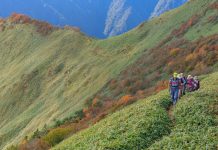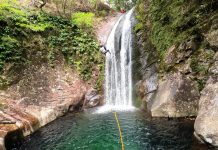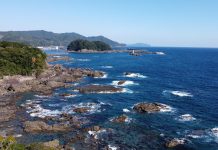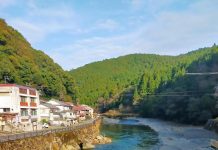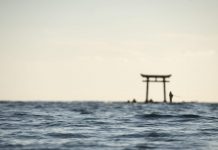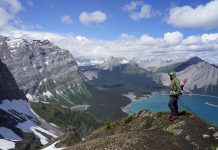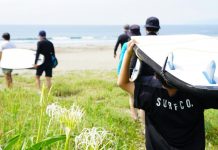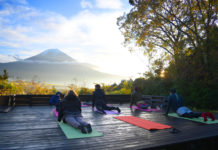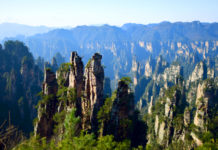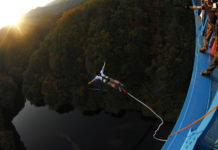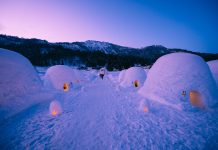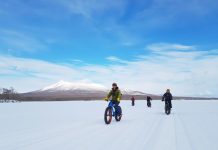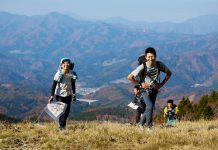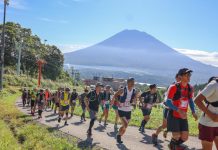Just west of the main island of Okinawa, set adrift among azure seas and encircled by white coral beaches, lie the Kerama Islands. Of the 20 islands making up this chain, all but five remain uninhabited. After dipping our paddles into the water at Tomarin, Okinawa’s main island port, we were off for a bit of island-hopping.
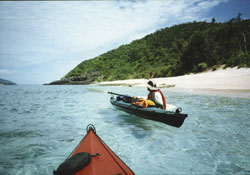
I shook the sleep from my head as wind and waves sounded around me. The mid-summer sun shone brightly, toasting the skin and sending the mind into a listless state. Ah, the rainy season was finally coming to a close.
My cohort on this trip, Junji Kosuzume, was just waking up and blurted out, “I’m beat. What time is it?”
“It’s past noon already, “I commented. “If we don’t get paddling, we won’t make it today.”
From Tomarin, we were headed 40 kms. west, to the sea kayak paradise of Kerama. Last night, stumbling about the streets of Naha, we did not get much sleep, so decided to land at Kamiyama Island, about 10 kms. west of Naha’s port, for lunch and a short break which soon turned into a long nap. We slowly rustled up our things and hit the sea once more, still feeling a bit tired and far from feeling comfortable in the kayak.
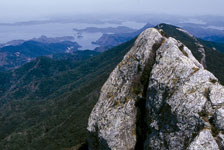
The sun began to set slowly in the west as we came upon uninhabited Nakajima Island, and I suggested, “There’s a nice beach. What do you say we pitch a tent here for the night?” Covered in green and with a smooth, white sand beach spreading out before us, the island put us a mere 10 kms. from our eventual goal: Tokashiki Island.
The next morning we awoke to unfriendly weather; the sky was turning black and large waves were crashing into the beach. After finishing breakfast, we soon made an attempt to paddle out, but found that a peaceful paddle offshore was not to be.
It was the last week of June, the beginning of summer in Okinawa, and we expected some easy island-hopping during the low tides after what should have been the end of the rainy season. Unfortunately, Mother Nature didn’t see it that way and, after an hour, as the waves grew higher, we were forced to cut short our trip to Tokashiki and stop at Maejima.
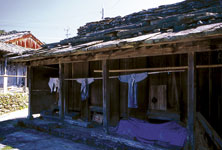
Covering ourselves in a tarp, we spent the rest of the day staring at the weather and waves. At nightfall we realized we’d have to wait until tomorrow to resume our trip, so we made camp.
The third day brought strong winds and rain that seemed to blow in sideways. The waves remained high but slightly more subdued than the day before. Suddenly Kosuzume blurted out, “Might as well give it a try!” We pulled the strings on our rain hoods tight enough so they wouldn’t blow off and paddled out.
The swells were enough to mask Kosuzume’s figure as he paddled just ahead of me. The salt water was blown up by the wind and struck our faces. Keeping our eyes forward was a challenge in and of itself.
With Okiyamaiwa, the midway point to Tokashiki, on our left, time seemed to stand still as we continued forward with not a word exchanged between us. Upon nearing Tokashiki, a boat entering the port was flailing about with its stern shifting precariously. We both seemed to be more concerned for them than ourselves.
Then, just as we arrived at Tokashiki, the sky cleared, a southern wind blew through, and rays of sunshine streaked through the clouds. What we had just been through seemed nothing more than a bad dream.
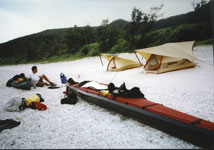
In the calm after the storm, we took to land at the Zamami Village and ordered ’burgers, fries and some colas at a shop well past its prime. Not a soul was around besides us and, as we sat at the plastic table set out in front, we felt a sense of relief in finally arriving at the heart of Kerama. This lazy summer day was the perfect backdrop for downing a ’burger and, as we lounged, the shop’s radio announced, “Today Okinawa has declared the end of the rainy season has arrived.”
Our days spent in paradise began there, with a night on one of Kerama’s uninhabited islands and the next on a completely different beach. We traversed from island to island during the day and spent the nights at our favorite spots along the way.
After a mid-day swim to cool off from the summer heat, we caught fish along side a skin diver fishing for octopus. Upon finding just the right beach, we pitched our tents and took out our fishing poles to catch dinner.
The trip to the Keremas was so good, I feel guilty in the sense that words and images don’t seem to do it justice. Sadly, some trouble has recently occurred between Kerama locals and some dubious kayakers (one burned down part of a small uninhabited island and another stayed on one of the islands without alerting the inn where they were staying), therefore some self-imposed rules have gone into effect. So, if you’re heading toward Kerama, make sure to check out the situation before you set sail. In the meantime, I’ll look forward to the return of this sea kayaker’s paradise.
GETTING THERE
Direct access to Kerama is available from Tomarin Port on the main island via the once-daily roundtrip “Zamami” ferry. A high-speed ferry, the “Queen Zamami” sets off one to three times per day, depending on the season and ports at both Zamami and Aka. There is an airport which currently only caters to charter flights, as the Ryukyu Air Commuter service ended its runs in March of this year.
WEB CONNECTION
Zamami Village: www.vill.zamami.okinawa.jp
Nature Land Kayaks: http://www6.ocn.ne.jp/~kerama/ (Only in Japanese)
Kerama Islands Seakayakers Rule: http://www6.ocn.ne.jp/~kerama/new.htm (Only in Japanese)

